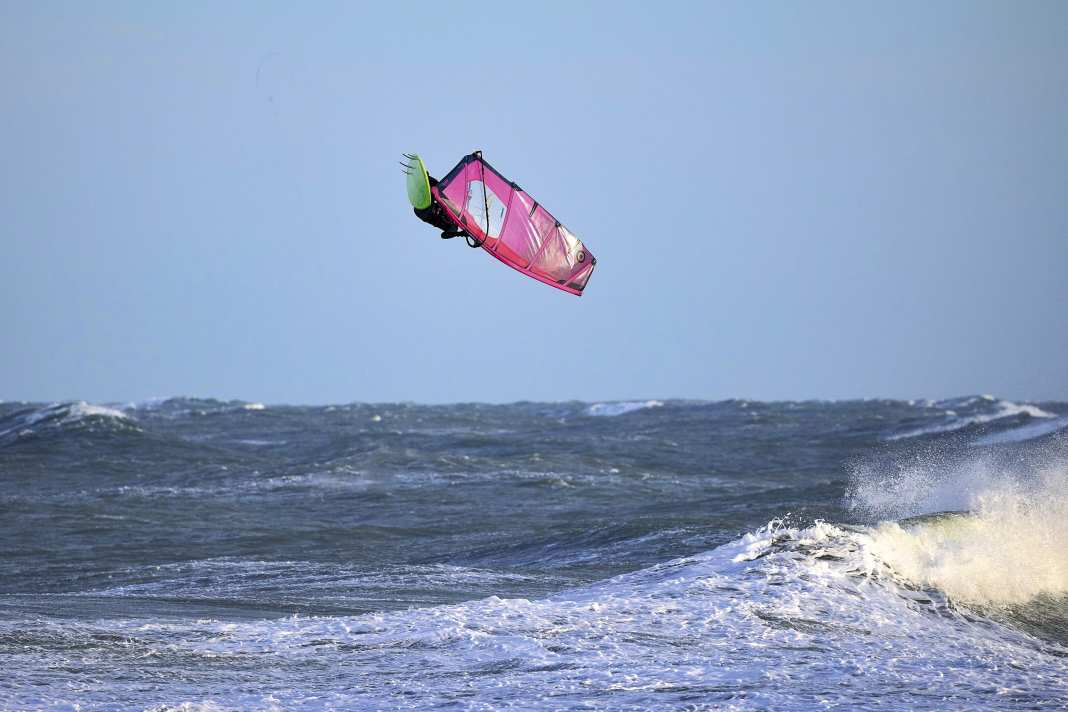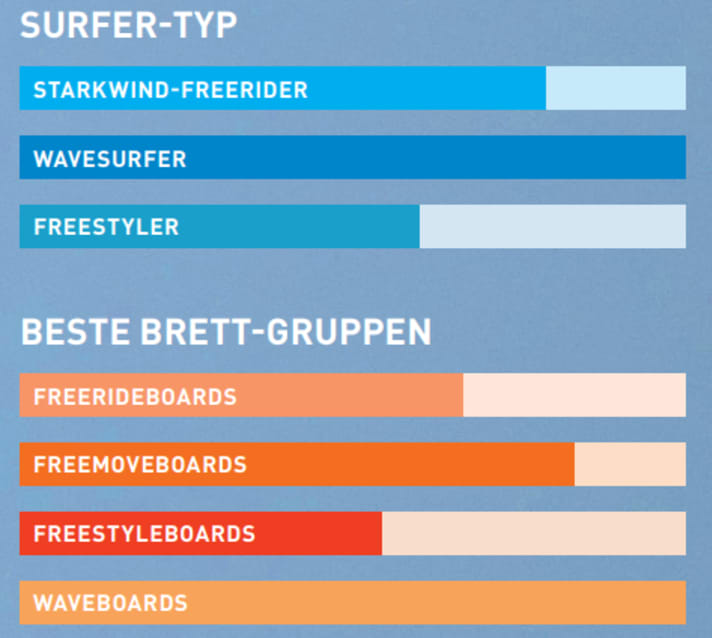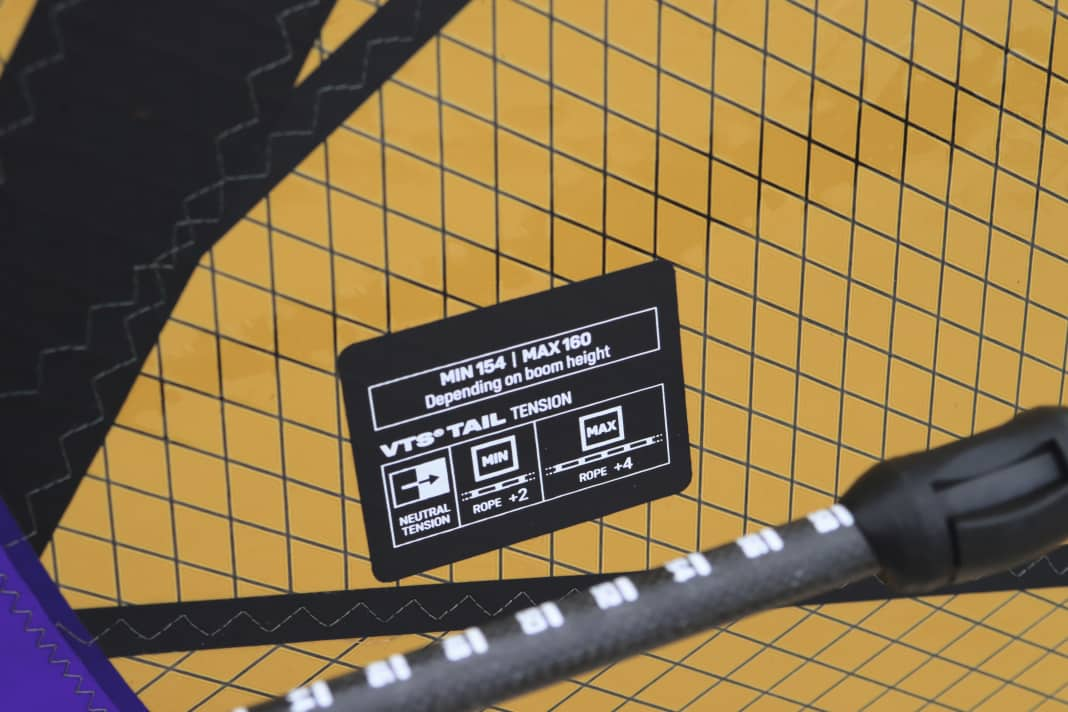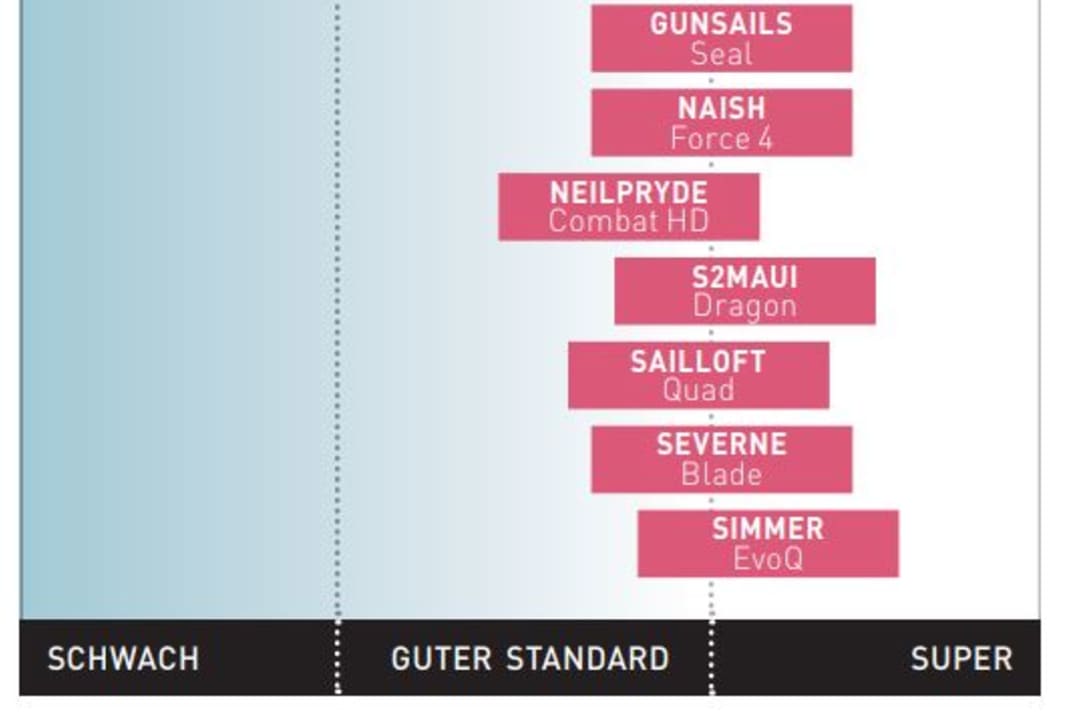Test wave sail 2025: Eleven wave sails around 4.5 square metres in the test
Surf Testteam
· 28.01.2025






These sails are included in the test:
The label "Wave" is not a lie in this group, all models are absolutely made for use in the surf. Nevertheless, flat water surfers or even beginners should not be put off by this. Because unlike waveboards, which really only make sense for experienced windsurfers, wave sails have a maximally large target group. Of course, we describe the riding characteristics in the surf in the test reports, but we also provide information on the right trim and the riding experience off the wave. How well does a sail plane? Is frequent re-trimming necessary or does it have a large wind range? And how easy is it to handle in manoeuvres? All these aspects are just as important for flat water surfers as they are for wave experts.
Sail Guide wave sails 4.4 - 4.6

Which mast for a 4.5 metre wave sail?
With a sail size of 4.5 m2, you can hardly avoid the 370 RDM mast, as vario tops are the absolute exception here. Only the Duotone Super Hero offers one, which means that the 400 mast is also an option. With the Severne Blade, the 400 mast would also work, but not because of a vario top, but because of the luff length of 404 centimetres. As always, switching to the longer mast makes the sail stiffer, but in light winds there is less profile and planing qualities can suffer somewhat. On the other hand, the rig feels tighter in strong winds, which can make sense, especially in the hands of heavyweights. If you weigh less than 80 kilos, the short mast is always better.
There are models where you find the trim immediately. With others, you have to fiddle around."
Light sails don't have to feel light
More and more sails are now breaking the three-kilo barrier on the scales. We give the measured weights, but would like to point out that measured weight cannot always be equated with perceived weight. Simply making the materials thinner and therefore lighter can also mean that a sail warps in strong gusts, the centre of effort shifts and the light feeling is quickly lost. Rather, it depends on what is between the two thin monofilm layers: If high-quality, low-stretch fibres are bonded here, they absorb the tensile forces, the connecting film can then be thinner and lighter without the sail appearing cheap and fluttery.
Two eyelets on the outhaul
Some brands equip the sails with two outhaul eyelets. Which eyelet you choose should depend less on your own height than on the conditions and the desired sailing characteristics. If you trim over the upper eyelet, this keeps the leech more closed on the water, the sail loads up more, resulting in more planing power in light winds and additional drive when riding waves. In strong winds in particular, it is often advisable to switch to the lower eyelet, which is often positioned slightly inwards, as this allows the leech to twist more freely - which can result in better control. This tuning option is clearly noticeable with GA Sails and Naish Sails, for example, but especially with the Goya Banzai.
Wave sail 2025: Details & features






You can find even more details of all test sails in the individual descriptions or at a glance in our preview!
The way to the right wave sail
Some of the models tested differ significantly on the water, which you quickly realise in a direct comparison, regardless of whether you are a newcomer or a semi-professional. Nevertheless, the marks we awarded should not all be lumped together, but should be assessed selectively: If you mainly use your wave sail in strong winds in flat water or in swell waves on freeride or freemove boards, you should pay particular attention to criteria such as planing, control/wind range and manoeuvre handling. Whether a sail offers the perfect off on the wave, on the other hand, can be left out of the equation.
On the other hand, wave fans with ambitions are likely to prioritise aspects such as drive, neutrality and handling. In return, you can turn a blind eye to small compromises in the planing rating, because with good technique and the right setup, you can get enough planing power out of all test models.
Wavesegel 2025: grades and riding characteristics






All wave sails 2025 in the individual reviews
Click here for the individual descriptions of the sails tested

